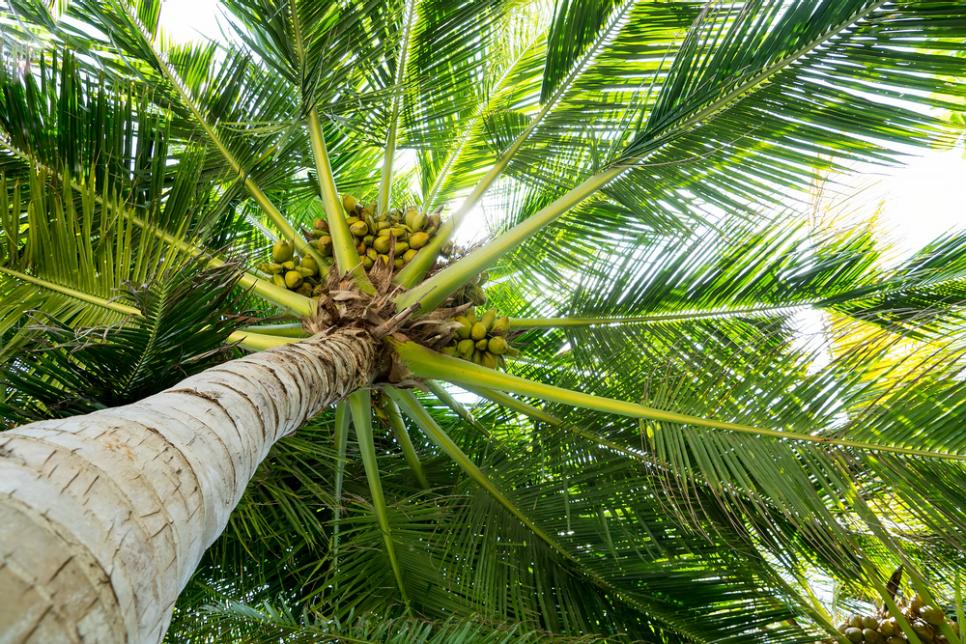Palm trees are not trees. They are extremely tall grass. Yet, Indians think that palm trees are the best trees around. Go around Delhi NCR and look at the residential societies, monuments and shopping malls of the region – you will find palm trees planted in abundance. Why? Because they are good to look at and do a pretty good job at giving a venue a decorated ambience. However, are palm trees good for Delhi, or even India? The simple answer is this: No, they are not. In fact, they are disastrous for the environment and our general surroundings. They may look good, but they are slowly eating away at our soil.
A weird culture has gripped India’s capital region. Now, palm trees are the go-to plants for everybody. For Delhi’s authorities especially, palm trees have come as a blessing. They are aesthetically pleasing to the eyes, do not occupy much space, and can easily be planted in hordes as substitutes to the trees that are felled in the national capital region for various purposes.
Palm Trees – a Danger to India
Palm trees are no substitute to canopied trees. Palm trees do not sequester carbon at the same rate as native canopy trees. In fact, they do not even produce much oxygen. So, carbon dioxide does not get absorbed at a rate which is needed, adding to the heat in Delhi. Palm trees do not provide much shade, they do not have branches for wildlife to make nests and no flowers or fruit to feed the local fauna.
What has been happening in Delhi is nothing short of a tragedy. Peepal and Banyan trees are getting chopped away indiscriminately. What are they being replaced with? Palm trees – that do not even quite qualify to be called trees.
According to the New Delhi Nature Society, native trees of Delhi have more foliage, so they are better at combating heat and air pollution. They also grow easily since they are genetically suitable for Delhi’s environmental conditions whereas Palms require high maintenance.
Meanwhile, palm trees in India are nothing short of a danger to the country’s rich biodiversity. Planting palm trees excessively harms the quality of the soil. Palm trees are known to absorb significant amounts of nutrients from the soil, degrading the quality of the soil.
Palm Trees: Aliens to India
Palm trees hardly provide any shade. Traditional trees like Peepal, Bargad, Amla, Arjun, Babool become a part of the community. They have occupied central spaces in India, historically speaking. They sustain an entire ecosystem – with birds flocking to set up home on such trees. These birds keep the unwanted insects away from human settlements.
With palm trees around, there is no scope for birds making a habitat for themselves. This is why insects of all kinds continue to make life miserable for people. Furthermore, traditional trees, after a certain time, do not require much care. They are tuned to the climate of India. These trees have incredible longevity and sustain themselves with whatever the Indian surroundings have to offer. Little to no human intervention is required.
Palm trees in India are not in their natural habitat, which is why they require extra care, which hikes up the maintenance costs per tree. And then, the fast-spreading presence of palm trees is making traditional big Indian trees vanish from our surroundings, which is a dangerous trend. With big trees vanishing, there is no way Delhi will get a respite from its lethal heat waves.
What Environmentalists Say About Palm Trees in India
There is a reason why the Modi government’s big push for turning Northeast India into a palm tree hub is facing tremendous resistance. Narayan Sharma, assistant professor at Department of Environmental Biology and Wildlife Sciences, Cotton University, Guwahati told the Deccan Herald that oil palm cultivation in a large scale could lead to destruction of forests. He said, “The oil palm will create crisis of food for many wildlife species and birds as they don’t eat oil palm fruits. This will further aggravate the human-animal conflicts in the region too.”
Read more: What has PM Modi done for the Environment? Well, here is a comprehensive list
The palm tree experiment has already been carried out in Mizoram. Due to its long gestation period and poor productivity, people dumped the ‘tree’. However, the plantation of such trees had by then rendered the soil infertile for other crops.
Palm trees are not Indian. They are, in fact, a threat to India, and therefore, need to be shunned.
